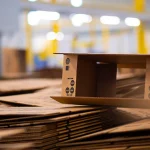Portugal’s national beverage about to become more expensive
‘What’s the price of eggs got to do with it?’, as the old saying goes. Nothing. But the price of a ‘bica’, Portugal’s indispensable morning coffee, has everything to do with it!
Why? Because it’s about to go up. In fact coffee prices just keep going up. After two consecutive years on the rise, the beginning of 2025 shows that the trend is set to continue, with both coffee bean varieties – Arabica and Robusta – trading at all-time highs. And there is no going back: the ‘bica’ will get even more expensive.
Says business daily Negócios, Arabica reached a new record in the New York market on Thursday, February 6, at US$4.07 per pound.
On January 31 it reached the level of $US4 for the first time in its history – after, last December, the price surpassed the previous maximum (Back IN 1977, at US$3.37), when it hit a high of US$3.48 – and since then it has established new successive highs.
Robusta, which since the end of last year was around the highs reached in 1979, has also been trading in territory never before seen in the London market: delivery contracts in May reached a maximum of US$5,840 per ton on January 31 and continues to trade around these values.
In addition, arabica futures yesterday marked the 12th consecutive session of upswing, the longest winning streak ever. And prices for March contracts are higher than those of May, which means that there could be short-term coffee shortage problems.
This price threatens to further increase costs for roasters and coffee consumers and the outlook is not expected to ease any time soon given concerns that supply remains tight – and uncertainty surrounding the various US trade disputes has been growing as the imposition of new tariffs could further disrupt supply at a time when consumption is growing.
Since the beginning of the year, Arabica has climbed 27% and Robusta 14% in price, after valuations reached about 70% in 2024.
Contributing to these skyrocketing gains has been a perfect storm of challenges that have jittered the markets, namely climate change (which has led to major crop failures in the world’s largest producers), logistical disruptions, speculation, the new regulatory framework in the European Union and tariffs from the Donald Trump administration.
The other reason has to do with the weather. The lower harvests, especially in the two main world producers, Brazil and Vietnam, due to a prolonged period of drought, have had a great impact on the increase in prices.
Last year, fires and deforestation in the Amazon caused the worst drought ever in Brazil. And in Vietnam the scenario is also grim. Last year the country experienced its worst drought period in about 10 years.
In Costa Rica, the decline in production comes from devastating rains. Colombia and Honduras have also recorded poor conditions for coffee trees and, as they are important producing regions, they have contributed to falling supply and soaring costs.
Also, new EU legislation aiming to preserve forests could mean that the exports of thousands of coffee producers to the EU could be rejected while tariffs slapped on Colombia – one of the world’s most important producers – by the US could add an extra 25% onto the price of a sack of coffee beans – passed on to the consumer, of course.
And then there are supply chain costs. All coffee consumed in Portugal is imported and there are still ongoing problems affecting supply chains because of the costs of container freight.
The price of transporting coffee beans in containers has been affected by several geopolitical factors over the past year from wars to congestion at ports or industrial action, not to mention the rising cost of living and labour coats.
And for people like me, who prefer a ‘meia de leite’ or flat white coffee in the morning, the price of this coffee in a café or restaurant could feasibly hit €8-10 this year according to some analysts quoted in the Guardian newspaper – although that’s highly unlikely say others.










